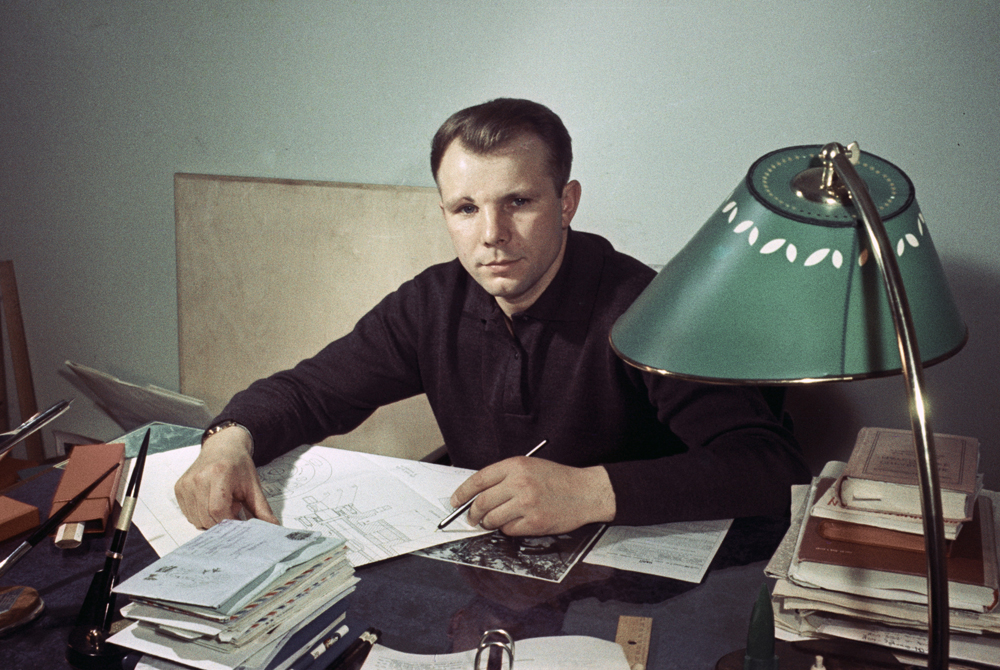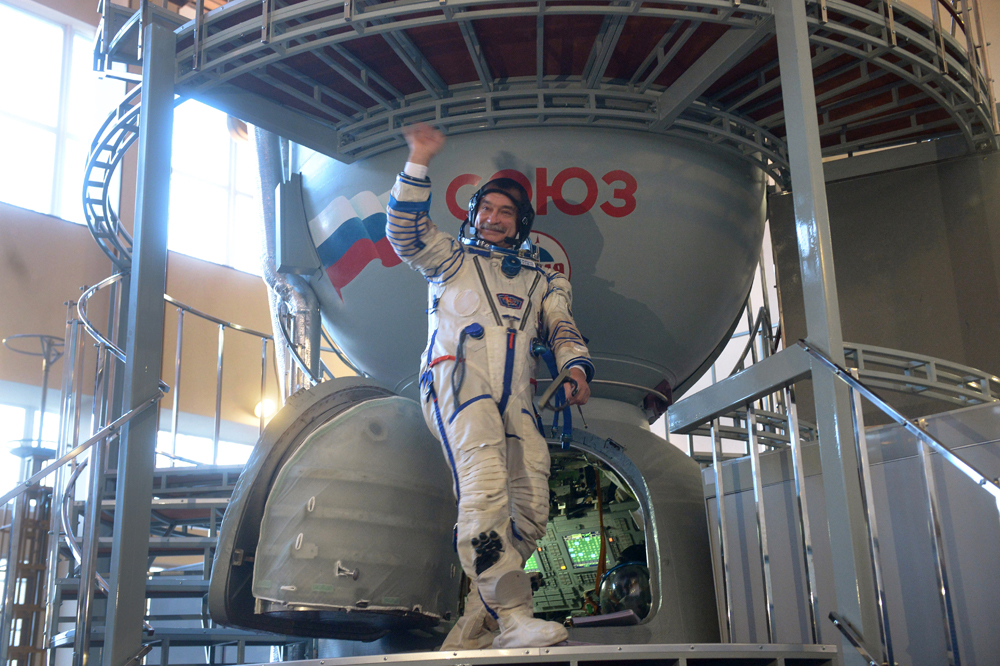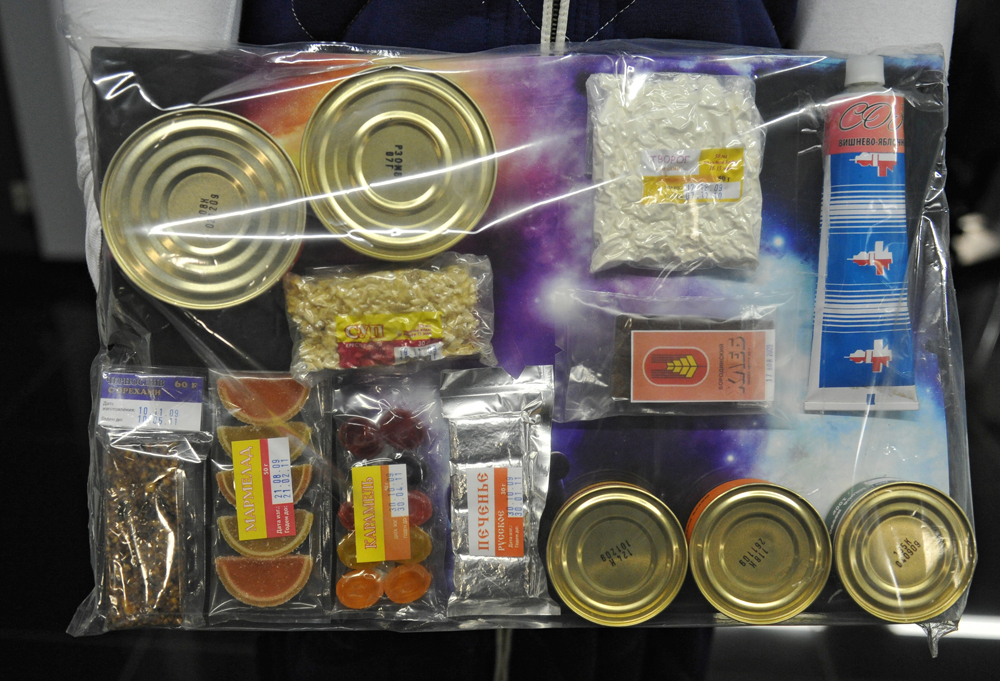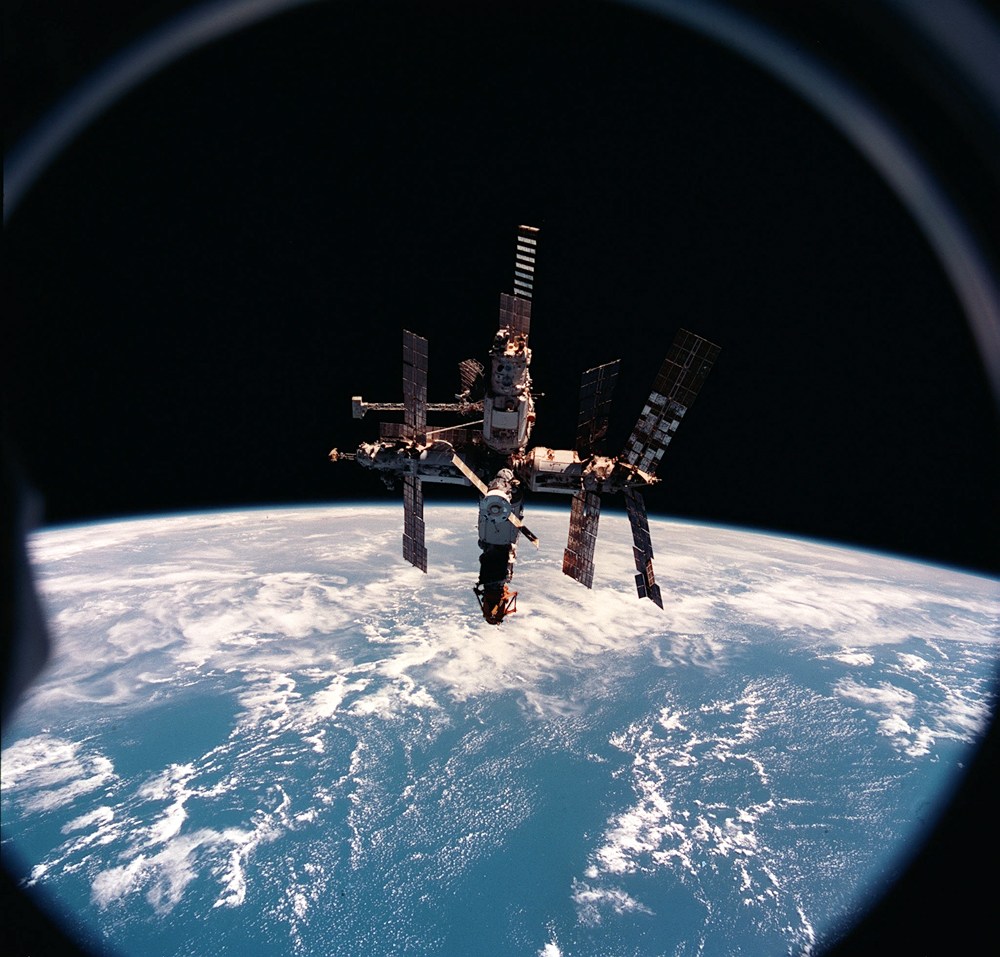
Russia's space control struggled on December 26, 2000, to restore contact with the Mir space station, seeking to prevent a possible crash landing by the aging orbiter. Flight control outside Moscow lost contact with Mir around 3 p.m. local time December 25, sparking intense activity by Russian space experts to restore radio signals with the unmanned craft and avert a potential catastrophe. This picture of Mir was taken from the Space Shuttle Discovery during STS-91 in June 1998.
ReutersYuri Gagarin’s selection as the first man in space changed history, but it also changed his life. Here are six things you might not know about the first man in space.>>>
 Photo by Alexadnr Mokletsov / RIA Novosti
Photo by Alexadnr Mokletsov / RIA Novosti
The Soviet Union opened its first cosmonaut training center 56 years ago this month, and it now prepares to meet the goals of a new generation of space explorers. On January 11, 1960 the Commander-in-chief of the Soviet Air Force, Konstantin Vershinin, issued a secret decree on the creation of a military unit for space travel training. This was the beginning of the Cosmonaut Training Center.
 Photo by Grigoriy Sisoev/RIA Novosti
Photo by Grigoriy Sisoev/RIA Novosti
All of the Soviet Union’s legendary space odysseys began from a single point on the map: the Baikonur Cosmodrome, lying in the middle of the endless Kazakh steppe. The first artificial Earth satellite, the first craft to approach the Moon, and the first manned orbital craft spacecraft were all launched here, making Baikonur a leading symbol of the space age.
And as so often happens with all things legendary, the history of Baikonur has become so rich in various stories over the decades that it's hard to separate fact from fiction.
Individuals working in space require specially-produced and packaged food that provides them with a balanced and nutritional diet for the months they are away from Earth. But what types of food are suitable for consumption in space? RBTH visited the Russian factory that makes food for cosmonauts to take on their space journeys.
 Photo by Vladimir Pesnya / RIA Novosti
Photo by Vladimir Pesnya / RIA Novosti
The conquest of space was the embodiment of Soviet utopia and the most important element of the great Soviet myth of a brighter future and the victory of communism — not only on terra firma, but throughout the galaxy.
The Apollo-Soyuz mission that was the beginning of international cooperation in space turns 40 in 2015. By 1975 the USSR and the U.S. had been traveling into space for nearly 15 years, yet could do little to help each other in cases of emergency.
The dog Laika was the first animal to enter the earth orbit. Her unlucky fate inspired artists around the world.
Photo by TASS
On March 31, 1966, the Soviet Luna-10 unmanned spacecraft became the Moon’s first artificial satellite. The mission was one of the key milestones of the Luna program, which the Soviet government pursued for almost 20 years. Its breakthroughs still form the basis of modern-day and future exploration.
ExoMars, the joint Russian-European expedition, hopes to find signs of life on the Red Planet. In addition, there will be an attempt to develop technologies for a soft landing amid dust storms. Mars has much in common with Earth: seasons of the year; as well as seasonal melting of polar ice caps and even snow, made of carbon dioxide. There are also clouds and water. Days on Mars resemble those on Earth.
The first module of the famous Soviet station, Mir, was launched into orbit on February 20, 1986. The experience of its creation 30 years ago was later used to develop the International Space Station (ISS), while its plunge to the Pacific Ocean sparked rumors of a mysterious space bacteria. Here are other little-known facts about the Mir station:
 Photo by Reuters
Photo by Reuters
 Photo by German Architecture Museum
Photo by German Architecture Museum
This year marks the 55th anniversary of mankind's first voyage to outer space. On April 12, 1961 Soviet cosmonaut, Yuri Gagarin, was the first human to orbit the Earth. Today, people in Russia still dream of the stars, and even space buffs and bloggers have begun making satellites.
All rights reserved by Rossiyskaya Gazeta.
Subscribe
to our newsletter!
Get the week's best stories straight to your inbox